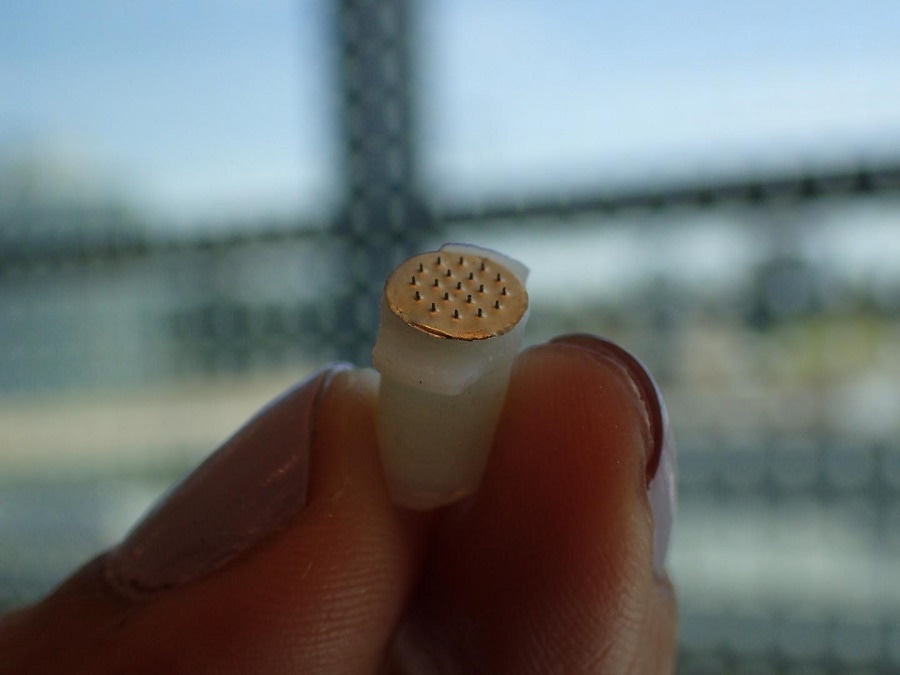Jul 25 2016
A microneedle drug monitoring system has been developed by a team of researchers from the University of British Columbia (UBC) and the Paul Scherrer Institut (PSI) in Switzerland. This new system is capable of enhancing patient comfort and could potentially replace expensive, invasive blood draws.
 Microneedles are designed to puncture the outer layer of skin, which acts as a protective shield, but not the next layers of epidermis and the dermis, which house nerves, blood vessels and active immune cells. CREDIT: Sahan Ranamukhaarachchi
Microneedles are designed to puncture the outer layer of skin, which acts as a protective shield, but not the next layers of epidermis and the dermis, which house nerves, blood vessels and active immune cells. CREDIT: Sahan Ranamukhaarachchi
During medical treatment, the newly developed system that has a thin, small patch is pressed against a patient’s arm in order to measure drugs in the patient’s bloodstream in a painless manner without extracting blood. The very small needle-like projection, measuring less than half a milimetre long, appears to be very similar to a hollow cone and does not penetrate the patient’s skin just like a conventional hypodermic needle.
Many groups are researching microneedle technology for painless vaccines and drug delivery. Using them to painlessly monitor drugs is a newer idea.
Sahan Ranamukhaarachchi, PhD student, UBC
Microneedles are custom designed to puncture the skin’s outer layer, which operates like a protective shield. Microneedles do not puncture the epidermis and dermis layers, which houses active immune cells, blood vessels and nerves.
Ranamukhaarachchi and team developed the microneedle to control the antibiotic vancomycin, which is used for treating severe infections and is discharged through intravenous line. Three to four blood draws are performed everyday on patients consuming the antibiotic. Vancomycin is capable of causing toxic side effects that are life-threatening, so these patients should be closely monitored.
The team discovered the possibility of using the fluid detected just below the skin’s outer layer instead of blood in order to control the vancomycin levels in the bloodstream. The microneedle gathers only a very small volume of this fluid, which is less than a millionth of a millilitre, and this leads to a reaction that takes place inside the microneedle that can be detected with the help of an optical sensor used by the researchers.
This is probably one of the smallest probe volumes ever recorded for a medically relevant analysis.
Urs Hafeli, Associate Professor, UBC
"The combination of knowhow from UBC and PSI, bringing together microneedles, microfluidics, optics and biotechnology, allowed us to create such a device capable of both collecting the fluid and performing the analysis in one device," said Victor Cadarso, a research scientist and Ambizione Fellow at PSI.